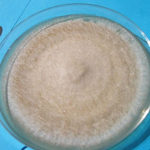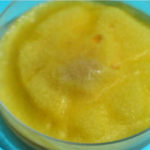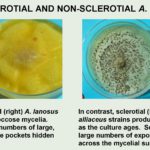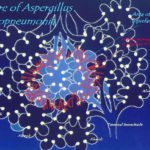Date: 26 November 2013
Secondary metabolites, structure diagram: Trivial name – malformins
Copyright: n/a
Notes:
Species: A. nigerSystematic name: Cyclo(D-cysteinyl-D-cysteinyl-L-valyl-D-leucyl-L-leucyl), cyclic (1®2)-disulfideMalformin AMolecular formulae: C23H39N5O5S2Molecular weight: 529.718Chemical abstracts number: 3022-92-2Selected references: Kim KW, Sugawara F, Yoshida S, Murofushi N, Takahashi N, Curtis RW. Structure of malformin B, a phytotoxic metabolite produced by Aspergillus niger. Biosci Biotechnol Biochem. 1993 May;57(5):787-91.Toxicity: mouse LD50 intraperitoneal 3100ug/kg (3.1mg/kg) EFFECTS: GASTROINTESTINAL: OTHER CHANGES. LIVER: OTHER CHANGES. KIDNEY, URETER, AND BLADDER: OTHER CHANGES Agricultural and Biological Chemistry. Vol. 39, Pg. 1325, 1975.
Images library
-
Title
Legend
-
Sclerotial strains produce bright yellow, floccose mycelia. Sclerotial strains produce small numbers of large, fused sclerotial bodies in discrete pockets hidden within the mycelium.
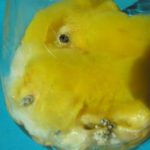
-
Aspergillus alliaceus. No branching was observed in A. alliaceus conidiophores. Sclerotial strains typically produce large numbers of exposed, uniformly-shaped sclerotia across the mycelial surface.

-
Aspergillus alliaceus – Sclerotial. A. alliaceus strains produce flat, pale mycelia that darken as the culture ages.Sclerotial strains typically produce large numbers of exposed, uniformly-shaped sclerotia across the mycelial surface.

-
A. alliaceus strains produce flat, pale mycelia that darken as the culture ages.Sclerotial strains typically produce large numbers of exposed, uniformly-shaped sclerotia across the mycelial surface.
